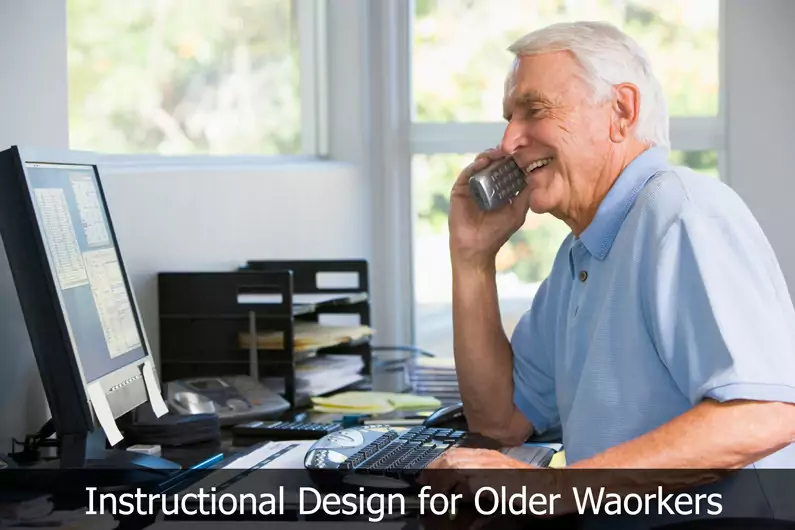Supporting Older Workers with eLearning

There is ample evidence to support the conclusion that older workers have much to contribute to any workforce. Their experience, wisdom, communication and interpersonal skills are readily needed. The challenge is that today many older workers are being asked to do their job in an entirely new context with entirely new tools. Since technology is often seen as an obstacle—the very thing that is preventing older workers from excelling – eLearning and mLearning are often overlooked as a solution. In fact, there’s growing evidence that using eLearning and mLearning to support older workers is an effective way to ensure they have the skills needed to stay in the workforce and keep up with their industrials changing technologies.

Case Study: From Face-to-Face to Online Service
Kelly Foster is a librarian with a Master of Library Science degree from an American Librarian Association accredited institution. For nearly three decades, she has worked as a reference librarian at a large public library in Chicago. When Kelly entered the profession, directly out of university, few people took reference librarians for granted. Reference librarians were the go-to people in all research endeavors, helping patrons navigate the complexity of the library system and source materials they may have never even imagined existed.
Jump ahead to present – librarianship, like most professions, has changed considerably over the past twenty years. Today, fewer patrons come to the library to carry out research. In fact, today students and public library patrons alike often do their research from home. This means that Kelly is now expected to carry out much of her work online. At first, she was resistant: “I just hated the fact that people wanted to chat online and not in person. I thought, the books and resources are here and so am I. I just wouldn’t do it.” As Kelly’s manager made it clear that she needed to change, she started to budge on her position: “I knew it was time to get on board, but by then, I wondered, how do I do this? I have younger colleagues who are always texting and for them, this is just natural.”
In Kelly’s case, an age-specific training program was introduced to help older librarians explore online platforms. Employees were also encouraged to offer feedback on new platforms. The aim was to train older workers and keep the library’s approach to online reference support in touch with the values and quality control of face-to-face methods of reference support. “Over time, I realized this is better in many ways,” explains Kelly, “Now I everyone has a written record and I don’t feel like my advice is getting lost. Also, I keep responses to certain common questions on file and just cut and paste them so I’m not repeating myself all day. It’s really been great.”
Five Reasons to Use eLearning with Older Workers
Encourages older workers to explore new technologies: While not all older workers are technophobes (far from it), some may be unfamiliar with new online tools and platforms. Moving training and retraining online is already educational in this respect.
Promotes self-paced forms of study: Online learning can be carried out any time, any place and at any pace. If a learner is unfamiliar with a concept or platform, they can take it at his or her own pace and spend as much time as needed adjusting (without the judgment of other workers).
Provides Workers with Access to Reference Materials: With mLearning, typically carried out in modules, workers can carry their training with them. If they forget something essential, the vital information is likely only going to be a few swipes or clicks away.
Improves Memory: There is growing evidence that online learning (e.g., repeated online visual activities or games) can improve the memories of older people by repairing damage that is part and parcel of the aging process.
Can be Customized: There reality is that your older workers may require different training than your interns and younger workers. While you may not need to introduce them to the company, they may need additional support in order to fully engage with new platforms. With online learning, customization is simple and affordable. There is no need for a one size fits all approach.